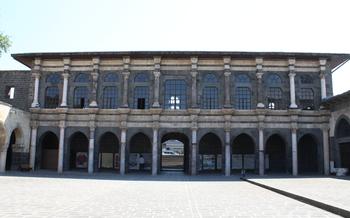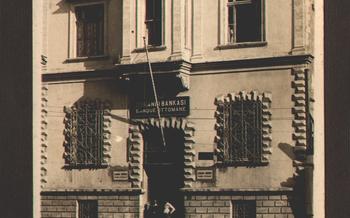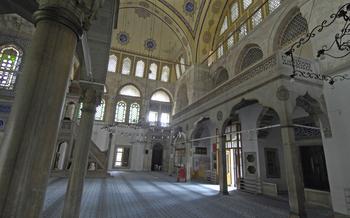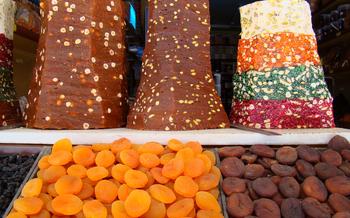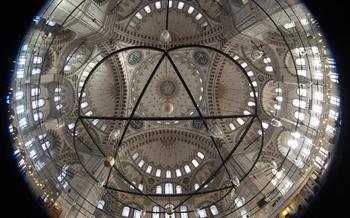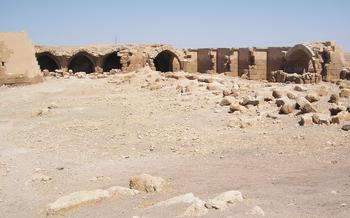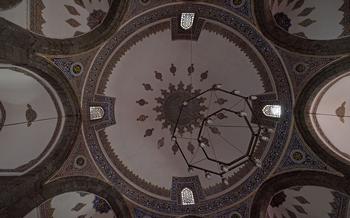
Iskender Pasha Mosque
- Diyarbakır, an Ancient City with a Rich Tapestry of Civilizations
- The Symbol of Diyarbakır: The Iskender Pasha Mosque
- Splendid Architecture: A Masterpiece of Design
- A Journey Through History: Exploring the Mosque's Past
- A Place of Worship and Community
- Intricate Details: A Closer Look at the Mosque's Features
- Exploring the Mosque's Interior: A Haven of Peace
- A Symbol of Resilience: The Mosque's Enduring Legacy
- Cultural Significance: The Mosque's Role in Diyarbakır's Identity
- Preserving the Past: Conservation Efforts at the Mosque
- A Must-Visit Destination: The Mosque's Allure for Tourists
- Photography Tips: Capturing the Mosque's Beauty
- Local Customs and Etiquette: Respecting the Mosque's Traditions
- Accessibility and Facilities: Planning Your Visit
Diyarbakır, an Ancient City with a Rich Tapestry of Civilizations
Diyarbakır, a city in southeastern Turkey, boasts a rich history dating back to the 4th millennium BC. It has been a witness to the rise and fall of various civilizations, each leaving its unique mark on the city's cultural and architectural landscape.
The ancient city of Amida, founded by the Hurrians around 3000 BC, was the first major civilization to settle in the area. The city's strategic location at the crossroads of trade routes between Mesopotamia, Anatolia, and the Mediterranean made it a desirable prize for many empires.
Over the centuries, Diyarbakır has been ruled by the Assyrians, Babylonians, Romans, Byzantines, Arabs, Seljuks, and Ottomans, each contributing to the city's diverse cultural heritage. The city's unique blend of Islamic and Christian architecture, including the iconic Iskender Pasha Mosque, is a testament to its rich history and the many civilizations that have shaped its identity.
The Symbol of Diyarbakır: The Iskender Pasha Mosque
At the heart of Diyarbakır's ancient cityscape, amidst a tapestry of historical landmarks, stands the Iskender Pasha Mosque, a majestic symbol of the city's rich cultural heritage. Built in the 16th century during the reign of the Ottoman Empire, this architectural masterpiece bears the name of its illustrious benefactor, Iskender Pasha, a powerful governor who played a pivotal role in shaping Diyarbakır's destiny. The mosque's striking presence, with its soaring minarets piercing the sky and its intricate facade adorned with intricate carvings, has become synonymous with the city's identity, earning it the title of Diyarbakır's emblem.
Beyond its architectural splendor, the Iskender Pasha Mosque holds profound historical significance. Its construction marked a pivotal moment in Diyarbakır's transformation into a thriving cultural and religious center under Ottoman rule. The mosque's strategic location, at the crossroads of ancient trade routes, further cemented its importance as a symbol of the city's enduring resilience and its ability to blend diverse cultural influences into a harmonious tapestry.
Splendid Architecture: A Masterpiece of Design
The Iskender Pasha Mosque stands as a testament to the architectural prowess and artistic vision of its creators. Its facade, adorned with intricately carved stonework, features a grand entrance portal that invites visitors into a realm of awe-inspiring beauty. The mosque's minarets, reaching towards the heavens, are masterpieces of design, their slender forms complemented by decorative bands and delicate finials.
Inside, the mosque unfolds as a symphony of architectural harmony, blending Islamic and Ottoman styles with breathtaking effect. The vast prayer hall, with its soaring arches and elegant columns, creates a sense of spaciousness and grandeur. The mihrab, the focal point of the mosque, is a masterpiece of craftsmanship, adorned with intricate tilework and calligraphy that evoke a sense of reverence and devotion.
The mosque's use of local materials, such as the warm, golden-hued Diyarbakır stone, adds a touch of authenticity and regional character to the structure. The craftsmanship displayed in every detail, from the intricate carvings to the delicate stained glass windows, is a testament to the skill and artistry of the builders who brought this architectural masterpiece to life.
A Journey Through History: Exploring the Mosque's Past
The Iskender Pasha Mosque has stood tall for centuries, silently witnessing the ebb and flow of history. It has undergone numerous renovations and transformations throughout the years, each leaving its own unique mark on the structure. The mosque's story is a testament to its resilience and adaptability, mirroring the rich tapestry of Diyarbakır's past.
Legends and tales abound, woven around the mosque's history. One popular story speaks of a hidden treasure buried beneath its foundations, believed to be the lost riches of a bygone era. Another tale tells of a secret underground tunnel leading from the mosque to the banks of the Tigris River, enabling worshippers to escape during times of turmoil.
The mosque's architectural evolution is a testament to the blending of cultures and influences that have shaped Diyarbakır. Originally built in the 16th century, it underwent extensive renovations in the 19th century, incorporating elements of Ottoman architecture. The result is a harmonious blend of styles, creating a unique and striking edifice that has become synonymous with the city's skyline.
The Iskender Pasha Mosque is not merely a building; it is a living testament to history, embodying the spirit of Diyarbakır and its people. Its walls silently narrate the city's triumphs and tribulations, embodying the resilience and cultural heritage that have defined this ancient metropolis for centuries.
A Place of Worship and Community
The Iskender Pasha Mosque is not just a stunning architectural masterpiece; it is also a vibrant center for religious practices and community gatherings. The mosque serves as a place of worship for the Muslim community in Diyarbakır, where they come together to offer prayers and engage in spiritual contemplation. The sound of the muezzin's call to prayer echoes through the city, inviting the faithful to gather within the mosque's sacred walls.
Throughout the day, the mosque is abuzz with activity as worshippers perform their daily prayers. The spacious prayer hall, adorned with intricate carpets and Islamic calligraphy, provides a serene and tranquil environment for devotion. The sense of spirituality and tranquility that permeates the air creates a profound connection between the worshippers and their faith.
Beyond its religious significance, the mosque also serves as a crucial community hub in Diyarbakır. It is a place where people from all walks of life come together to socialize, exchange ideas, and strengthen their bonds. The mosque hosts various community events, such as religious festivals, lectures, and charitable gatherings, fostering a sense of unity and belonging among the city's residents.
For visitors, exploring the Iskender Pasha Mosque offers a unique opportunity to witness the deep-rooted religious traditions and vibrant community life of Diyarbakır. By observing the daily rituals and prayers that take place within its walls, visitors gain a profound understanding of the Islamic faith and its significance in the lives of the local people.
Intricate Details: A Closer Look at the Mosque's Features
Upon closer examination, the Iskender Pasha Mosque reveals an array of intricate details that showcase the skill and artistry of its builders. The mosque's minarets, towering over the city skyline, are particularly striking with their unique design. Each minaret features a spiral staircase that leads to the top, offering breathtaking views of Diyarbakır. The stained glass windows are another highlight of the mosque's exterior, depicting intricate Islamic motifs in vibrant colors. These windows allow natural light to filter into the prayer hall, creating a serene and ethereal ambiance.
Inside the mosque, the intricate calligraphy and tilework are a testament to the mosque's rich artistic heritage. The mihrab, a niche indicating the direction of prayer, is adorned with delicate calligraphy and tilework, creating a focal point for worshippers. The minbar, a pulpit used by the imam during sermons, is also intricately carved and decorated. These details, combined with the overall architectural design, contribute to the mosque's awe-inspiring beauty and make it a true masterpiece of Islamic architecture.
Exploring the Mosque's Interior: A Haven of Peace
Step inside the Iskender Pasha Mosque and be enveloped by a serene and awe-inspiring atmosphere. The spacious prayer hall, adorned with intricate designs and soft lighting, invites you to pause and reflect. The natural light filtering through the stained glass windows casts a warm glow, creating a tranquil ambiance that soothes the soul.
At the heart of the prayer hall stands the mihrab, a beautifully crafted niche indicating the direction of Mecca. Its intricate carvings and calligraphy draw the eye, inviting worshippers to focus their prayers. The minbar, an elevated pulpit, stands beside the mihrab, its design echoing the mosque's overall aesthetic.
As you wander through the mosque's interior, take a moment to admire the intricate tilework that adorns the walls and ceilings. Each tile, meticulously arranged, contributes to the mosque's captivating visual tapestry. The harmonious blend of colors and patterns creates a sense of unity and balance, inviting contemplation and reflection.
A Symbol of Resilience: The Mosque's Enduring Legacy
Despite the passage of time and the challenges it has faced, the Iskender Pasha Mosque stands as a testament to Diyarbakır's resilience and determination. Throughout its long history, the mosque has endured various trials, including earthquakes, wars, and political turmoil. However, it has remained a symbol of the city's strength and its ability to overcome adversity.
The mosque's ability to withstand the test of time is a testament to the skill and craftsmanship of its builders. Constructed using sturdy materials and innovative techniques, the mosque has stood firm for centuries. It has survived earthquakes that have devastated other buildings in the city, and its minarets have remained intact despite countless storms and winds.
Beyond its physical resilience, the Iskender Pasha Mosque also represents the resilience of the people of Diyarbakır. The mosque has been a place of worship and community gathering for centuries, and it has served as a symbol of hope and unity during times of hardship. It has witnessed the city's struggles and triumphs, and it has remained a source of strength and inspiration for the people of Diyarbakır.
Today, the Iskender Pasha Mosque stands as a proud symbol of Diyarbakır's enduring legacy. It is a reminder of the city's rich history, its cultural heritage, and its ability to overcome challenges. The mosque continues to be a place of worship, a tourist attraction, and a source of pride for the people of Diyarbakır.
Cultural Significance: The Mosque's Role in Diyarbakır's Identity
The Iskender Pasha Mosque stands as a testament to Diyarbakır's rich cultural heritage and traditions. Its very existence embodies the city's Islamic identity, serving as a beacon of faith and spirituality for the local Muslim community. Beyond its religious significance, the mosque plays a vital role in promoting cultural understanding and dialogue, fostering a sense of unity and harmony among people of different backgrounds.
As a symbol of Diyarbakır's cultural heritage, the mosque attracts visitors from all walks of life, including historians, architects, and tourists eager to delve into the city's past. Its unique architectural style, blending Islamic and Ottoman influences, provides a glimpse into the region's diverse cultural influences. The mosque's intricate details, from the calligraphy and tilework to the stained glass windows, offer a captivating narrative of Diyarbakır's artistic traditions.
Furthermore, the mosque serves as a platform for cultural exchange and dialogue. It hosts various events, such as exhibitions, workshops, and lectures, that promote understanding and appreciation of Islamic culture and history. These events provide opportunities for people from different backgrounds to come together, share experiences, and learn from one another, fostering a sense of mutual respect and understanding.
Preserving the Past: Conservation Efforts at the Mosque
The Iskender Pasha Mosque stands as a testament to the enduring legacy of Diyarbakır's rich history and cultural heritage. Preserving this iconic landmark is of paramount importance, not only for the people of Diyarbakır but for the entire world. Conservation efforts are diligently undertaken to ensure that the mosque's historical and architectural significance is protected and maintained for future generations.
Experts in the fields of architecture, history, and conservation work tirelessly to restore and preserve the mosque's original features. This delicate process involves meticulous attention to detail, utilizing traditional techniques and materials to maintain the mosque's authenticity. From repairing intricate tilework to reinforcing structural elements, every effort is made to safeguard the mosque's integrity.
However, preserving the mosque's historical essence while ensuring its accessibility to visitors presents unique challenges. Balancing the need for conservation with the desire to share this magnificent structure with the public requires careful planning and consideration. The implementation of sustainable practices and visitor management strategies helps to minimize the impact of tourism while preserving the mosque's sanctity.
By preserving the Iskender Pasha Mosque, we not only honor the past but also invest in the future. It serves as a living example of Diyarbakır's resilience and determination, inspiring generations to come. The mosque's enduring legacy as a symbol of faith, culture, and heritage is ensured through these ongoing conservation efforts, ensuring that its beauty and significance continue to shine brightly for centuries to come.
A Must-Visit Destination: The Mosque's Allure for Tourists
The Iskender Pasha Mosque stands as a captivating attraction, drawing tourists from around the world to marvel at its architectural splendor and cultural significance. Its unique blend of Islamic and Ottoman architectural styles, coupled with its rich history and religious importance, makes it a must-visit destination for those seeking a deeper understanding of Diyarbakır's cultural heritage.
Visitors to the mosque are treated to a sensory feast, as the intricate details of the facade, the vibrant stained glass windows, and the elegant calligraphy captivate their gaze. The mosque's spacious prayer hall exudes an atmosphere of tranquility, inviting visitors to pause and reflect on the spiritual essence of this sacred space.
Beyond its religious significance, the Iskender Pasha Mosque has become an important symbol of Diyarbakır's cultural identity. Its resilience in the face of historical challenges and its continued significance as a landmark have made it a source of pride for the city's residents. Tourists eager to delve into the heart of Diyarbakır's cultural tapestry will find the mosque to be an essential stop on their journey.
The mosque's popularity as a tourist attraction has also played a vital role in promoting Diyarbakır as a destination for cultural tourism. The influx of visitors has contributed to the city's economic development, creating opportunities for local businesses and entrepreneurs. The mosque's allure has helped to shed light on Diyarbakır's rich history and traditions, fostering cross-cultural understanding and dialogue among people from diverse backgrounds.
Photography Tips: Capturing the Mosque's Beauty
The Iskender Pasha Mosque is a visual masterpiece, and capturing its beauty through photography is an art in itself. To make the most of your photography experience, consider the following tips:
-
Golden Hours: Aim to visit the mosque during the golden hours, around sunrise or sunset, when the warm, diffused light creates a magical ambiance. This light enhances the mosque's colors and textures, resulting in stunning photographs.
-
Camera Settings: Use a wide-angle lens to capture the mosque's grandeur and incorporate the surrounding elements. Adjust your aperture to control the depth of field, focusing on the mosque's intricate details while blurring the background for a dramatic effect.
-
Composition: Experiment with different angles and perspectives to create dynamic compositions. Capture the mosque's reflection in nearby water bodies or position yourself at a higher vantage point for a bird's-eye view. Leading lines, such as the mosque's minarets, can draw the viewer's eye towards the main subject.
-
Details and Patterns: Don't just focus on the grand facade; zoom in to capture the intricate details and patterns that adorn the mosque's exterior and interior. The calligraphy, tilework, and geometric designs tell a story of the mosque's rich history and artistry.
-
Black and White: Consider converting your images to black and white to create a timeless and dramatic effect. This technique can emphasize the mosque's architectural lines and textures, resulting in a striking and evocative photograph.
-
HDR (High Dynamic Range): If you're dealing with high-contrast scenes, such as the mosque against a bright sky, consider using HDR photography. This technique combines multiple exposures to capture a wider range of tones and details, preventing overexposure or underexposure.
-
Tripod: For sharp and steady shots, especially in low-light conditions, use a sturdy tripod. This will allow you to take long exposures without camera shake, ensuring crisp and clear images.
Local Customs and Etiquette: Respecting the Mosque's Traditions
When visiting the Iskender Pasha Mosque, it is essential to be mindful of local customs and etiquette to show respect for the mosque's religious significance and the local culture. Visitors should dress modestly, covering their shoulders and knees. Women may also choose to cover their hair as a sign of respect.
Upon entering the mosque, visitors should remove their shoes and place them neatly on the designated shoe racks. It is customary to maintain silence and avoid loud conversations or disruptive behavior within the mosque. Visitors should also be respectful of the worshippers and avoid walking in front of them during prayers.
Photography is generally allowed within the mosque, but it is important to be discreet and avoid using flash photography, as this may disturb the worshippers. Visitors should also refrain from taking photos of people without their permission.
By following these guidelines, visitors can ensure that they show respect for the mosque's traditions and contribute to a peaceful and harmonious atmosphere for all.
Accessibility and Facilities: Planning Your Visit
The Iskender Pasha Mosque welcomes visitors from all over the world. It is open to the public during specific hours, typically during the daytime, and may have varying schedules on certain days or during religious holidays. It is advisable to check the mosque's official website or contact local tourism authorities for the most up-to-date information on visiting hours.
Admission to the mosque is generally free of charge, allowing everyone to experience its beauty and significance. However, donations are often welcomed and appreciated to help with the mosque's upkeep and maintenance.
For visitors with disabilities or special needs, accessibility options are available to ensure a comfortable and enjoyable visit. The mosque features ramps and elevators to facilitate movement throughout the premises. Additionally, there may be designated areas or seating arrangements for individuals with limited mobility.
Guided tours are offered to provide visitors with a deeper understanding of the mosque's history, architecture, and cultural significance. These tours are often led by knowledgeable guides who can share insights and anecdotes about the mosque. Multilingual information materials may also be available to enhance the experience for visitors from diverse backgrounds.
Planning your visit to the Iskender Pasha Mosque is crucial to make the most of your experience. It is recommended to allocate sufficient time to explore the mosque's exterior and interior, allowing you to fully appreciate its architectural details and spiritual atmosphere.
Remember to dress respectfully and behave appropriately while visiting the mosque, as it is a place of worship and cultural significance. This includes removing your shoes before entering the prayer hall and maintaining a respectful silence within the mosque's premises.
By following these guidelines and planning your visit accordingly, you can ensure a meaningful and enriching experience at the Iskender Pasha Mosque, one of Diyarbakır's most iconic landmarks.
